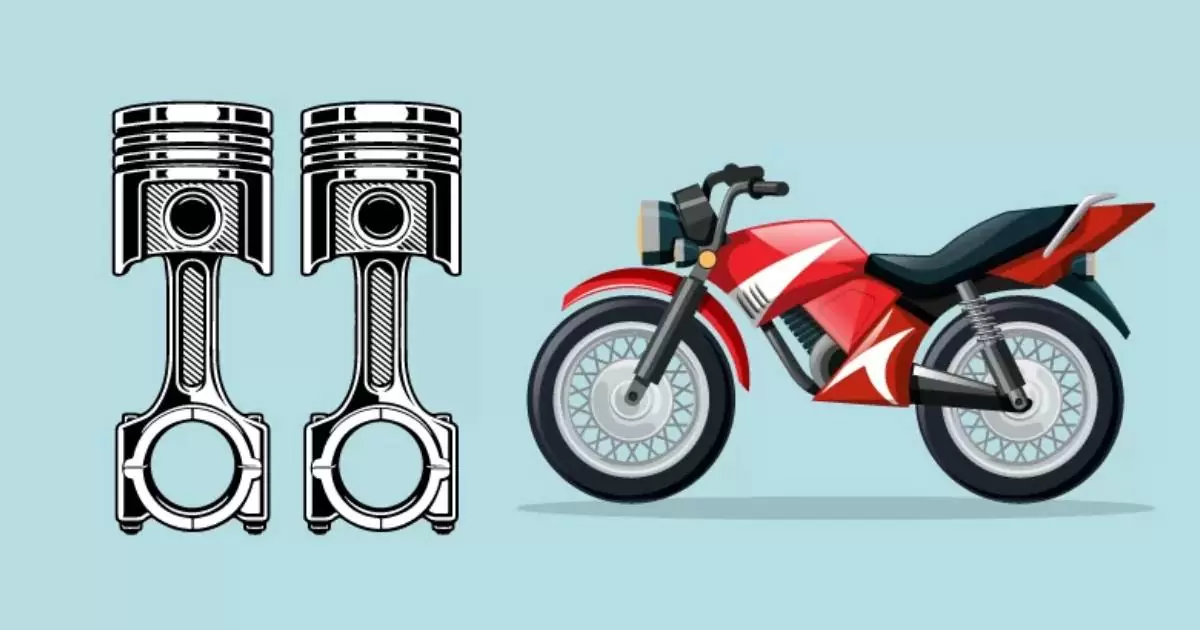In Seventies and Eighties, there was a practice of indicating geometric features on an engineering drawing. However, it was far from perfect. Geometric features like straightness, cylindricity, symmetry etc. were not indicated in a standardized way. It used to create a lot of ambiguity and confusion due to individual interpretations. Even in the academics, indication of geometric features was not focused as a key aspect for a design engineer. With increased adoption of computer technology and software by manufacturing industry, more and more clarity in design started becoming crucial. Hence GD&T or Geometric Dimensioning and Tolerancing started gaining importance.
When a mechanical component is to be manufactured, after visualization the designer creates a drawing and specifies the dimensions. Based on it, component is created on the shop floor. Now, take a simple example of a motorcycle. Inside its engine there is a cylinder and a piston. These cylinders and piston may come from different vendors. A person working in assembly would pickup any piston and any cylinder from the available lot and fit them together. The cylinder and piston should fit properly into each other.
Beyond proper fitment, the manufacturer has functional performance parameters like (say)consumption of 70 km/lit in mind. This functional performance is dependent on various factors like dimensions, material of the component and on geometric parameters like cylindricity, 90% contact, smooth motion, minimum frictional loss etc. GD&T is concerned directly or indirectly with all of these.
Benefits of GD&T

GD&T practices for indicating geometric features has many benefits as follows.
More exact and clear understanding
The GD&T specifications are more exact and clearer as compared to earlier practices. The indications like Zone descriptor, Material condition modifier etc. help achieve this exactness.
Clear communication by eliminating the ambiguity
GD&T specifications eliminate the ambiguity in the interpretations. It establishes clear communication between designers and manufacturing plant.
Helps production engineer
GD&T specification help the production engineer to plan his process in most appropriate manner. Feature control frame and relevant details would tell the production engineer where and how to hold the component while doing the operation.
- Helps tooling
GD&T helps tooling engineer to design and manufacture the most appropriate production tooling by specifying primary, secondary and tertiary references. Identification of these references or datums generate proper guidelines for locating, holding, arresting, clamping of a component for a machining process.
Facilitate inspection
Datums or primary, secondary and tertiary references also help inspectors get a lot of guidelines for testing the components. Special gauges can be designed easily based on geometric parameters like concentricity, positioning etc. for en masse inspection of components. These gauges save a lot of inspection time and cost.
Bonus Tolerances to reduce loss
GD&T specification offer a hidden ‘bonus tolerance’ in some cases. This bonus tolerance differs from component to component. With this available bonus tolerance, there is a possibility of components which is about to get rejected (due to crossing permissible geometric tolerance limits) can be given a second chance for acceptance without any rework or loss of function.
Smooth Operation for the entire operation chain
With more clarity and exactness, GD&T eliminates ambiguity and wrong interpretations. Hence entire chain production-inspection-assembly-sales becomes smooth in its operations.
Ease of outsourcing
With globalization, outsourcing is one of the key drivers for cost optimization. GD&T makes it easy to outsource the manufacturing to many vendors across the globe with no compromise on quality.
Standardization
Being a single standard language of communication amongst the various teams, GD&T avoids guesswork and interpretation.
Digital Readiness
With the advent in computers and software, most manufacturing companies use software to create engineering drawings. GD&T data can be easily integrated with 2D and 3D CAD files and tools.
Saving Cost
GD&T design approach enhances accuracy by allowing appropriate tolerances which can help maximize production and reduce rejections.
Benefits of learning GD&T ‘the right way’ with CADCAMGURU
As we have seen, 20-25 years back indication of geometric features was not a very serious business. Nobody would have asked questions in the interview on this. But Today, the situation is very different. Every industry including manufacturing, aviation, heavy machinery etc. are adopting GD&T practices for their obvious benefits. And hence no design engineer’s interview can be complete without asking questions on GD&T.
Learning GD&T theory and symbols is not enough. If you want to become a successful design engineer, you need a solid foundation of concepts like GD&T and knowledge of how to apply them to solve the real-world problems.
At CADCAMGURU, you not only learn the concepts, but clarify the confusions you had while learning them first time in your graduation curriculum. Here, you assimilate the concepts by applying your learning on solving the real-world design problems. You not only develop good design skills, but you even modify an existing design to make it better. And industry is looking for such skills.


